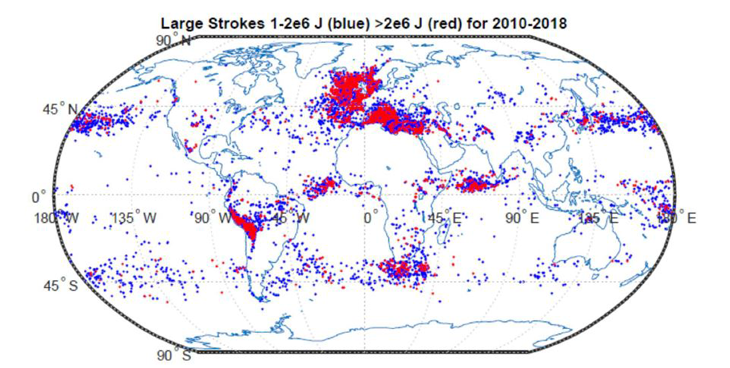Hotspots for superbolts
Not every lightning strike is the same. Some skip from cloud to cloud. Others strike the ground, delivering a shocking wallop to anything that gets in the way. Lightning differs by how strong it is, too. Scientists have observed mega-strikes of lightning that carry 1,000 times more energy than ordinary bolts. They’re so intense that, about four decades ago, a scientist had to coin a new word to describe them: Superbolts!
Scientists don’t yet know how these mega-bolts amass so much energy. But they don’t strike equally everywhere, a new study finds.
Superbolts seem to strike mostly at sea, it finds. And they don’t occur at the same rate throughout the year. Few, for instance, develop from April to October.
Bob Holzworth is an atmospheric physicist at the University of Washington in Seattle. He recently led a study to determine where superbolts tend to occur. And what his team found surprised them. “There were some very interesting peculiarities,” notes Holzworth.
Superbolts can strike almost anywhere. However, the largest number hit the northern hemisphere during winter.

The mega-strikes develop most often over the North Atlantic Ocean and the Mediterranean Sea. The Andes Mountains, in South America, had more superbolt strikes than other nearby areas. Another broad band of superbolt activity stretches across the Northern Pacific Ocean, east of Japan.
Read more at Science News for Students, here: https://www.sciencenewsforstudents.org/article/hotspots-found-lightnings-superbolts
